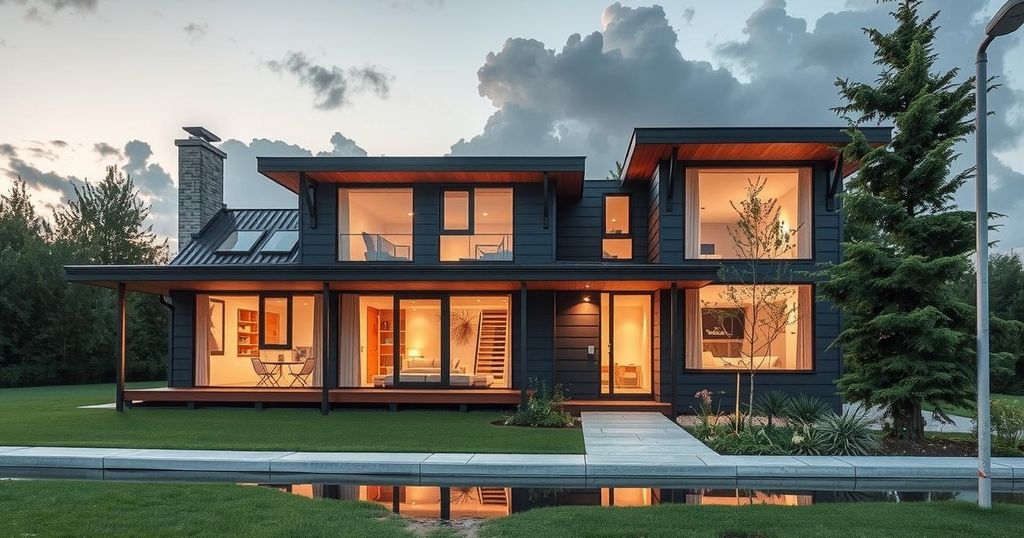Designing Climate-Resilient Housing for a Changing World

Climate change has significantly affected housing due to increased natural disasters, disproportionately impacting vulnerable populations. The Climate-Resilient Housing Initiative aims to create sustainable homes for 10 million people by 2030. Innovations in building technologies and designs are being developed to enhance resilience, including structures that withstand floods and heat. The UN has advocated for resilience strategies, encouraging the adoption of climate-safe construction practices in the housing market, amid historical inadequacies in housing preparedness.
As the impact of climate change continues to manifest through increasingly severe weather events, the urgency for designing resilient housing has never been more pronounced. In the United States, rising incidences of floods, wildfires, and heatwaves have rendered the housing market highly volatile, leading to substantial economic losses. Disadvantaged communities, often situated in vulnerable areas, suffer the most from these disasters, highlighting a critical need for affordable, sustainable housing solutions.
In response to these challenges, the Climate-Resilient Housing Initiative has emerged, aiming to create resilient homes for 10 million people by the year 2030. Innovative designs for climate-resilient housing are being developed, incorporating features such as elevation on stilts in flood-prone areas or buoyancy to withstand rising waters. Furthermore, homes are now being constructed with reflective surfaces, drought-resistant gardens, and solar panels to cope with hotter climates and conserve energy.
Architects are discovering cost-effective methods of enhancing housing resilience through strong, locally-sourced materials. For instance, well-insulated structures built from clay or adaptable wooden designs allow for relocation if necessary, providing a proactive approach to flood risk management. Enhanced safety mechanisms, like facilitating swift exits during fires and optimizing airflow for improved ventilation, are also being prioritized in new designs.
The United Nations Intergovernmental Panel on Climate Change has recently released a report advocating for various resilience strategies applicable to building standards. Organizations such as Green Builder Media are also investing in knowledge to facilitate the construction of climate-resilient homes. Given the rapid devaluation of properties due to natural disasters, real estate professionals are encouraged to adopt climate-resiliency measures to maintain property values and marketability.
Historically, most U.S. housing was built prior to the acknowledgement of climate threats, leaving vast amounts of infrastructure inadequately prepared for natural disasters. Although the journey toward fully resilient communities is still ongoing, available technologies, scientific insights, and financial incentives provide a foundation for transformative change in building practices.
The discussion regarding climate-resilient housing arises from the observable impacts of climate change, notably the increased frequency and severity of natural disasters such as floods, wildfires, and extreme heat. These phenomena are not only causing significant destruction to existing housing infrastructure but also exacerbating socioeconomic disparities, as vulnerable populations face heightened risks and inadequate protection from climatic threats. Therefore, it is crucial to explore innovative building strategies that can mitigate these risks and foster community resilience.
To effectively manage the risks posed by climate change to housing, a multifaceted approach is essential. This encompasses the development of innovative designs and technologies that prioritize resilience against natural disasters, investment in sustainable building practices, and the integration of climate-resiliency standards within the real estate market. While the challenges are considerable, there are promising initiatives already in progress, illustrating a collective commitment to safeguarding future generations against the severe impacts of climate change.
Original Source: kiowacountypress.net








